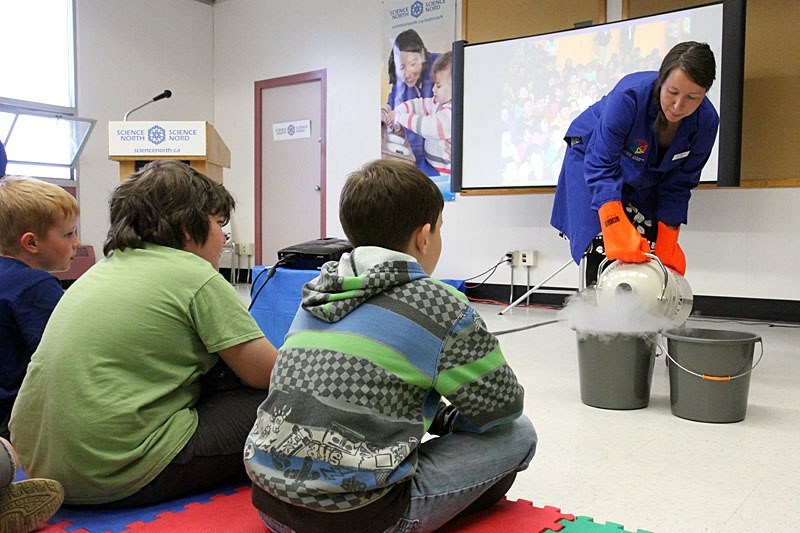THUNDER BAY – Thunder Bay could be host to Canada’s eighth-largest science centre in a matter of years, if an expansion plan being developed by Science North remains on track.
The provincial agency has invested heavily in plans to launch science centres in both Thunder Bay and Kenora, and is expressing confidence it will be able to make the project a reality.
Emily Kerton, Northwest expansion project lead with Science North, said the centres would serve as exciting destinations for local residents and tourists, while giving regional science education a major boost.
“I think this is such an incredible opportunity for our community,” she said. “The opportunity to learn more about science in our everyday lives, to have a place to go where you really see yourself reflected… to better understand the types of careers available within the STEM field.”
“When you think about the world today, what better time [could there be] to have a science centre with really amazing science education and communication available to us? Science is more important now than ever.”
A feasibility study conducted in 2020 identified a gap in “cultural and science-based programming” in Thunder Bay, she said, one Science North believes it can help fill.
The study suggested the city could support a roughly 30,000 square foot centre, drawing an estimated 60,000 visitors a year and creating significant tourism opportunities.
That would be slightly larger than Science North’s Dynamic Earth centre in Sudbury, but smaller than its main science centre there, which is the second-largest in Canada and includes an IMAX theatre and planetarium.
In Kenora, the agency is planning a smaller centre, likely involving an addition to an existing building, expecting around 20,000 visitors a year.
In the coming months, Science North will move into the “schematic design” phase of the project, drawing up building plans, scouting out locations, launching community consultations, and working to secure funding (it has already submitted applications, over which Kerton expressed optimism).
The organization will engage two firms to carry out schematic and visitor experience design, and has rented space in Thunder Bay’s downtown to focus on the expansion project, hiring coordinators there and in Kenora to conduct community engagement.
“They’ll be going out into all of the communities of Northwestern Ontario and asking people, what would you like to see in a science centre? What would this place mean to you? What kinds of experiences would you like to have when you come in?” said Kerton.
Consultation conducted as part of the 2020 feasibility study gave a broader sense of community expectations.
“We really heard from the community that it’s important to include natural landscapes within the building and the visitor experiences, to focus on the industry that takes place within our region, and to centre Indigenous perspectives – traditions, knowledge, culture, and also the innovations of Indigenous peoples,” Kerton said.
The public can follow the project and opportunities to participate in consultation at the Science North Thunder Bay Facebook page.
The agency hopes to conclude that work by the end of the year, and move to detailed design and construction in the next two to three years, Kerton said.
The project marks a chance for Science North to expand its reach in the Northwest in a big way – though that’s a process Kerton said has been well underway since it first opened an office at the Boys & Girls Club centre on Junot over a decade ago.
“We’ve seen incredible growth in the past 12 years,” she said. “I was one of two people hired into this office in 2010, and now we have 10 people.”
Over 1,000 children throughout the Northwest now participate in Science North summer camps, and the agency has ramped up its school programs and outreach to First Nations in recent years.
For Kerton, expanding with two new science centres is a way to take that work further, making science education more accessible and appealing for people of all ages in the region.
“In order to have any kind of opportunity to go and learn about science in an informal way, we’ve had to travel great distances,” she said. “There’s Minneapolis, there’s Toronto, there’s Winnipeg – these places are all so far-flung, and it costs a lot of money to get there.”
“To have a science [centre] in Thunder Bay, in Kenora, it really brings that experience to the people.”
